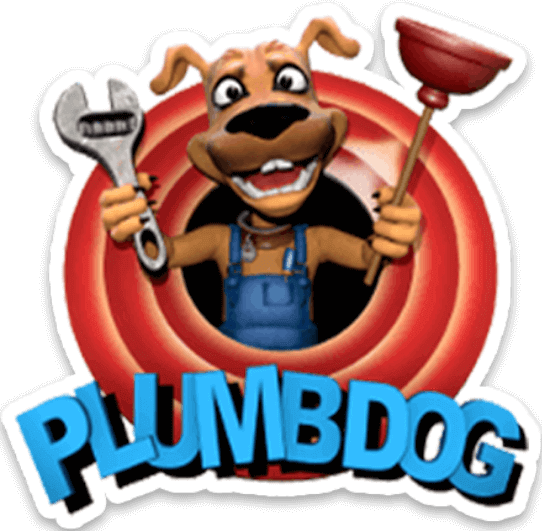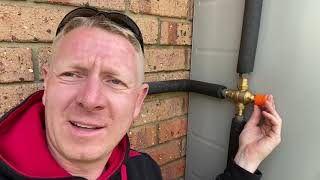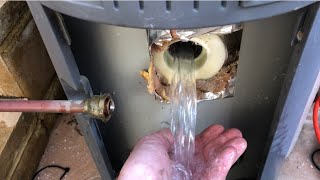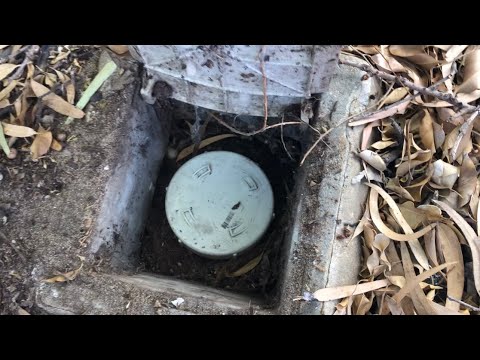- Common hot water problem – There’s low pressure from the hot water system and the water isn’t very hot.
- Common cause – The hot water system has been left there doing its thing for years without a major hot water service or any maintenance at all.
- Watch our local Perth Plumber, Top Dog Richard, at work on a property in Thornlie, Western Australia
- Check out more of our VLOGs & don’t forget to like and subscribe to our YouTube channel!
On the job today, our customer is facing trouble getting hot water with a steady flow. The hot water system is a Rheem Stellar 360 gas water heater, manufactured in 2012. There’s no service sticker on the heater, which means it most likely hasn’t been serviced at all since installation.
The Tempering Valve
In a hot water system, the tempering valve is responsible for delivering the perfect hot water to 50 degrees inside the house. The valve mixes the right portion of hot and cold water to strike the ideal balance and prevents the user from burning due to water overheating.
The tempering valve installed on this property is calcified, suggesting it has been worn out, which is an excellent sign as it has done a fair job all these years. But to maintain the smooth functioning of the hot water system, you ought to replace it once every five years.
Taking his thorough investigation forward, the next thing that Richard checks is the water isolation valve, which on turning on, makes a rumbling noise that implies the overdue of the tank’s major service. This sound is the sign of complete degradation of magnesium anodes, which also means that there is most likely sediment in the base of the tank.
Other Checks
Examining the water isolation valve, cold relief valve and hot relief valve, all else appears ok.
Our obedient Plumbdog goes inside and checks the water temperature using the thermometer, which reads 43 degrees, seven degrees below the desired temperature. The flow of the water, too, is not up to the mark.
Fixing the Hot Water Issue
The ideal way of addressing this issue from the root is by opening the water heater and replacing the degraded anodes with new ones. The replacement and service is a costlier option but recommended for longevity of the hot water system. Due to budget constraints on the costumer’s end, we have a fix that won’t dig a massive burn in the pocket but our customer is still aware of the consequences of not performing a major service.
Note: because this a quick fix, there’s a fair amount of possibility of residue being stuck inside the valve with the residue already sitting in the tank. This fix could last a long time or it could quickly get blocked up again.
Warning
The tempering valve does a great job at regulating water temperature and stops the residents from getting scalded. The water in the house may be very hot but it’s not hot enough to cause and harmful damage.
We always recommend hiring a professional to do the job. Not only are we qualified and experienced with the right tools for the job, we are also insured and are aware of the consequences to each part of the process.
If you are keen to try replacing the tempering valve on your own, be especially aware that the water directly from your tank is much hotter than the water that comes out of the tap in your home. It can cause severe burns and as you can see from the video, hot water can continue to flow from the tank depending which system you have.
Final Check
Richard goes back inside the house and checks if the water is adequately heated. On checking, the thermometer reads precisely 50 degrees, which is the desired result, and the flow of the water has improved considerably.
If you face a similar issue at your place and need a Plumber in Perth, then do not wait any longer and give us a whistle! Our Plumbdogs will fix your plumbing problems using the knowledge of their expertise. We pride ourselves in being genuine maintenance plumbing specialists. Not only do we have all the gear and every idea, our specialist services also include water leak detection and repairs and finding and fixing blocked drains.






